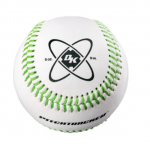Scoring Runs Without Hitting Part III
In this installment of “Scoring Runs Without Hitting,” we will look at how to score runners from third primarily with less than two outs, and a few techniques you can use to improve your chances of scoring a runner from third with two outs.
Sign up for More Free Content Here!
Squeeze bunt: I am not a big fan of the suicide squeeze play. When it works, it looks glamorous and there is virtually no chance of throwing the runner out. When it doesn’t work, it can lead to game changing outs. My personal belief is that the reward doesn’t out weight the risk in virtually all cases. If the pitcher throws a pitch that is unbuntable, if the the batter bunts through the pitch, or if the batter pops the ball up, you are staring one or two outs straight in the face.
I do believe that a safety squeeze can be a the a good strategy in the right situation. Again, knowing your personnel is crucial when deciding if you should attempt a safety squeeze. You will want an average or above average runner at third and an average or above average bunter at the plate. The batter squares late (like a suicide) and tries to bunt the ball to the first basemen (sorry to pick on them but they are usually the worst athlete on the infield). The runner from third takes a slightly bigger than usual secondary lead and breaks toward the plate when the ball is down. This much safer than, and equally effective to a suicide squeeze. A very good time to attempt a safety squeeze is with runners at first and third and nobody out and your #9, #1, or #2 hitters at the plate (again depending on personnel). The plus side of a safety squeeze at this point in the game is you will likely score the run from third and move a runner into scoring position with one out. The negative of a safety squeeze in that situation is that you will likely make an out and may take yourself out of a potential big inning.
Hitting with runner on third and less than two outs:
There are two main types of balls in play that will score runs with a runner at third and less than two outs, groundballs infielders playing deep, or flyballs of medium or deep depth. Your players should know what type of hitters they are and should know use that knowledge to know what their objective is in their at bat. Stronger hitters should be looking to drive the ball to the outfield early in the count, then just put the ball in play late in the count. Weaker hitters should be trying to put the ball in play on the ground (even with a drawn in infield, think lots of holes) in all counts. The biggest goal for all hitters in all counts in with a runner at third and less than two outs should be to put the ball in play and hope something good happens. This may mean shortening your swing with one strike instead of two. Strikeouts with less than two outs and a runner on third can kill a team in a close, low scoring game. I would not recommend swinging at pitches that you would not normally swing at. Remember, taking a walk in almost any situation is a good outcome.
Get Your FREE Pitching Download HERE!
A few other tactics:
With one out, runners at first and second and a potential double play ground ball, if your runner is average or above average at second and goes hard between second and third, automatically send the runner from second home. In the event that they don’t turn the double play, or they bobble the ball at first, you may be able to steal a cheap run. When you have runners at third and two outs, have your runner be a little more aggressive on passed balls and wild pitches. As soon as they see the down angle of the ball, they should take an extra step or shuffle, and be ready to break for the plate if the ball bounces far enough from the catcher.
1st and 3rd offense: I will not get specific with the techniques of different first and third offenses, but putting in some good first and third plays to steal a run could be a good idea. A few of the ones to investigate are walk off from first base, run and stop, delayed steal from first, double steal and many others (sounds like another possible topic blog topic!).
Summary: Even when you are not hitting, if you can get a runner to third base, there are a lot of different ways you can score them from there. Work with, and talk to your players to get them to understand the different possible situations they may be put in if the game is low scoring, close and late.
Find Out About CCA's Hitting and Generating Offense Course HERE!
More from my site
 How to Improve the Landscape of Youth Baseball
How to Improve the Landscape of Youth Baseball Alex Rodriguez Story on 60 Minutes and What Youth Coaches Can do
Alex Rodriguez Story on 60 Minutes and What Youth Coaches Can do CCA Podcast 023: Adjusting to college baseball
CCA Podcast 023: Adjusting to college baseball CCA Podcast 120 – Getting the most out of a crowded weight room this offseason
CCA Podcast 120 – Getting the most out of a crowded weight room this offseason CCA Podcast – Sneak Peek Inside December Q and A
CCA Podcast – Sneak Peek Inside December Q and A The Forgotten Aspect of Baseball Fitness
The Forgotten Aspect of Baseball Fitness
 Posted by Kyle Nelson
Posted by Kyle Nelson- Posted in Uncategorized
 Dec, 19, 2012
Dec, 19, 2012 No Comments.
No Comments.
Elite members login here
Check out what’s New/Hot!
Recognizing, Diagnosing, and Fixing Common Hitting Flaws eCourse The 3 metrics we tested on Blast motion sensors this year Sneak Peek Inside an Elite Q and A The batting practice continuum Elite Member’s area table of contents 50+ “Chaos” hitting drills
5 sample Chaos hitting drills FREE
Mental Skills and Culture Building The hitting pyramid Welcome Elite Member, Trey! Ideas for a pitcher first practice 12 week bat speed improvement plan Make plans this offseason to have your team playing their best baseball at the end of the year” Top 5 hitting drills to translate practice skill to game performanceHow we used Blast Motion sensors with a team in 2019
What to do if your hitters are overmatched Welcome Elite Member, Tommy! Setting your baserunners up for success Welcome Elite Member, Mike! A consulting call with Elite Member Matt FREE Web Clinic: Developing Athletic, Consistent, Extraordinary Infielders
 Coach Kyle Nelson
Coach Kyle Nelson